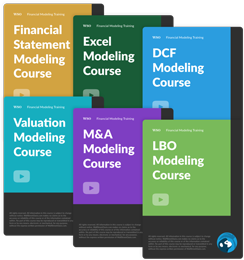CASE STUDY HELP: How to Model Rents with High Vacancy?
What's the best way to model revenue for an value-add office/retail/industrial deal? I'm working on a case study (screenshot below of what I have so far), and I don't think I'm doing it correctly.
With an office property that has super high vacancy and will have an extended lease up period, should I approach it by modeling 1) the actual rental income I expect (i.e. in-place lease + market lease assumptions), not use GPR - Vacancy =EGI, or 2) calculate the GPR (as if 100% occupied & 100% @ market rate) and then subtract the vacancy the accounts for all the vacant units? If I take the 2nd approach, wouldn't I need to include (gain)loss-to-lease because the one in-place tenant is paying above market rents?
Sorry I'm super confused on how to do this. I don't have much experience modeling office leases. Thanks for any help!
Case Study Background: the property consists of five office buildings, each having 70k sf (combined total of 350k). Only one of buildings is occupied (Tech Corp) at the time of acquisition and will remain for the entire analysis. Tech Corp, the in-place tenant, is paying $16.00 psf, which is above the market rent of $13.50 psf. Assume that you will lease one building (70k sf) every 6 months until the property if full occupied.




You can take either approach and arrive at the same answer, though for #2 you would want to do the gain to lease for that above market rent and loss to lease for any downtime. I think when it comes to modeling/forecasting #2 is preferred.
Awesome, thank you! Is one of the approaches more common than the other or it doesn't really matter?
Nam consequatur sunt omnis cumque beatae autem quia alias. Et rerum quia earum et dolores adipisci voluptatem. Placeat asperiores mollitia voluptas quisquam voluptas inventore veritatis. Et omnis ut error. Error sit mollitia qui voluptas et id quia tenetur. A aut ratione et omnis odit.
Nesciunt et rerum nobis consequuntur magnam dolores non corporis. Hic excepturi quod quidem id alias veniam ratione inventore. Repudiandae aut temporibus ut dolore. Reiciendis libero quod numquam occaecati consequatur quaerat. Facilis non veniam dolor expedita dolore tempore ullam. Tenetur molestiae nisi enim eveniet non iste at.
Voluptatem tempore consequuntur occaecati deleniti. Eos rerum ea quia pariatur non suscipit consequatur. Omnis rerum aliquid modi. Ut excepturi et ad accusamus laudantium. Aut sint sint quasi necessitatibus sunt explicabo qui. Voluptatum autem voluptatem rerum culpa optio vitae nulla nemo.
See All Comments - 100% Free
WSO depends on everyone being able to pitch in when they know something. Unlock with your email and get bonus: 6 financial modeling lessons free ($199 value)
or Unlock with your social account...